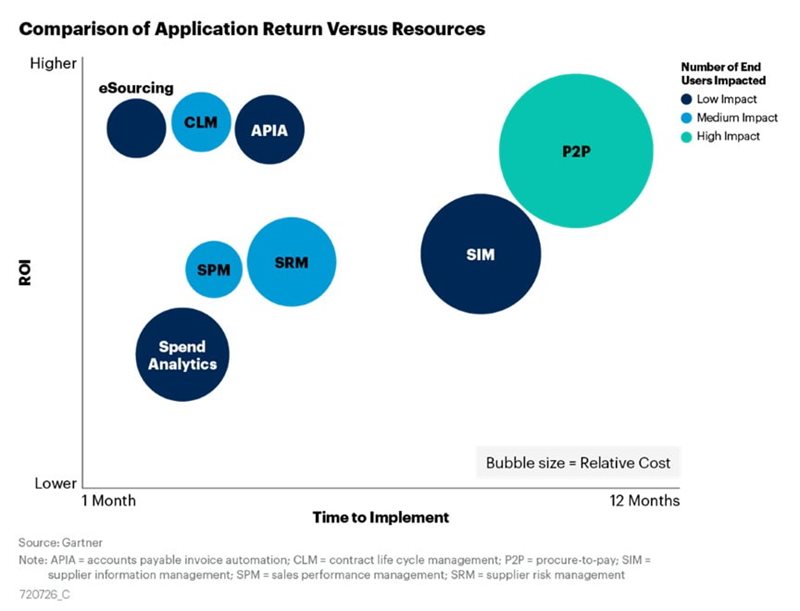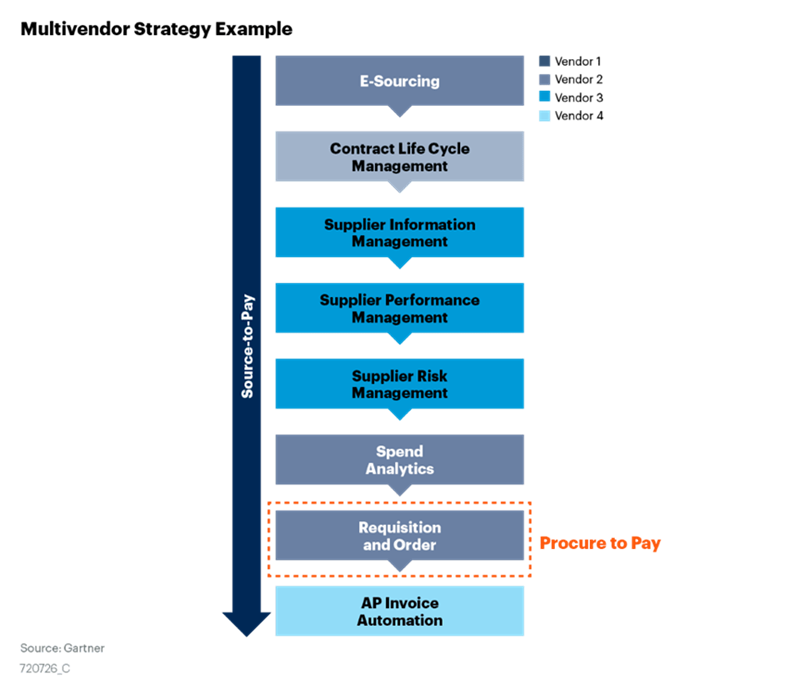- Blog
- 3 Key Takeaways from “Win Big By Starting With High-Value, Low-Risk Procurement Applications: The Case for Accounts Payable Invoice Automation”
3 Key Takeaways from “Win Big By Starting With High-Value, Low-Risk Procurement Applications: The Case for Accounts Payable Invoice Automation”
Gartner’s new report, “Win Big by Starting with High-Value, Low-Risk Procurement Applications,” highlights the need for application leaders to rethink their future investment strategies given the global economic uncertainty caused by COVID-19.
In a recent webinar with Gartner analyst Micky Keck and Basware VP of P2P Product Management Sami Peltonen, they determined 3 key strategies to focus on in 2021 and beyond in order to keep your technology investments moving forward and your business afloat.
1. Small bite approach to investment strategy
Due to limited budgets, limited resources, or compliance concerns, it can be tough to get the buy-in needed for technology investments. But through a “small bite approach,” organisations can take advantage of the budget they have and invest it into technologies and solutions they need to optimise departmental processes. By taking this approach and funding the rest essentially on your own, you can reduce risk, bring money back to your organisation quicker, and build a reputation of success.
Gartner recommends starting your solution investments in areas such as APIA, spend analytics, contract lifecycle management (CLM), and e-sourcing.
In their report, Gartner states that “Solutions in the first phase of an investment strategy should meet certain criteria. Specifically, they should:
- Relieve immediate business pain points
- Have relatively lower implementation cost and annual licensing fees
- Require implementation time that is less than one year, ideally six months or less
- Impact only a small number of functional users
- Impact existing systems with a limited number of integrations required

2. Consider accounts payable invoice automation (APIA) first
Accounts payable invoice automation (APIA) solutions offer many advantages to businesses, including:
-
The automation of a highly manual process
-
Improvements to supplier relationships and financial flexibility
-
Increased cost effectiveness
-
Quick and easy deployment
According to Gartner,
“There are two functional areas in the S2P process where organisations commonly utilise best-of-breed solutions. CLM and APIA are two of the most common areas where a point solution can bring specialisation value. And these areas have one thing in common — non-procurement or sourcing organisations are the primary users. CLM is heavily impacted by the legal and risk management requirements of the organisation. Those functional areas typically dictate these requirements, and procurement must work within those organisation-specific requirements. APIA touches many finance and treasury processes that have specific needs as well. Vendors that focus on the specific needs of those processes often outperform suite vendors that focus first on a tightly integrated, procurement-first strategy.”
APIA is not only a feature that touches many parts of the finance and treasury processes but these types of projects can also be completed in under six months and drive a large ROI due to high levels of document automation and error reduction. A good example is the automated capture of invoices via emailed PDFs to an email address versus a person scanning a paper invoice. This eliminates the need for site-specific activity and reduces business risk during events such as COVID-19, when personnel may not have access to the mailroom to collect paper invoices.
When tumultuous events arise like the current situation we’re facing, the disruption of processes, performance, customers, suppliers, and partners simply cannot be avoided. During uncertain times, keeping cash flowing is fundamental to keeping everything else moving too—and APIA is key to doing just that.
Taking slow, tedious, manual, paper-based processes out of the AP cycle and moving to a digitised process provides clear and compelling benefits for the entire process. Submitting, processing, and paying invoices electronically is easier and faster. It means less paper, decreased handling of physical documents, and fewer manual interventions. Additionally, the automation of associated workflows such as routing, coding, matching, and approvals will realise similar benefits.
3. Specialist solutions, not end-to-end S2P suites
Full source-to-pay (S2P) suites from a single vendor present a plethora of problems including slow time to value and poor scoping. S2P vendors typically have some subpar modules as their solution is an amalgamation of various acquisitions and mergers. Due to their patch-work nature, weaknesses are slowly revealed, and stakeholders will turn the full suite into a partial suite as they find workarounds and hire new vendors to patch holes.

Overall, organisations are achieving a better ROI utilising multiple solutions. Therefore, it’s important to evaluate P2P vendors around their ability to provide an open architecture that enables a partner ecosystem.
No vendor offers a fully S2P suite that is best in class across all modules – it’s just not possible. And many are not as well-integrated as their marketing would suggest. Almost all the S2P suites that are available in the market were originally built for indirect spend only. You need a solution that can address both indirect and direct spend.
Further, “Gartner recommends a multivendor strategy over customising your procurement and sourcing applications. Customisations dramatically increase the cost of ongoing maintenance, and they inhibit upgrades. Application leaders should customise only when the outcome is to deliver a unique competitive advantage for the organisation.”
Related
-
By Martti NurminenFrom the Office of the CFO: The Path to Touchless Invoice Processing – A Perspective and Lessons from Basware's Own AP Automation Journey
-
By Basware RepresentativeAccelerate Your Business Growth with Basware AP Automation: Fast Track to Value
-
By Basware RepresentativeUnveiling CFO Strategies for Long-Term Value Creation – Webinar Insights
-
By Anu HämäläinenUnlocking the Power of AI in Finance: A Dive into Invoice Ingestion Revolution
-
By Christopher BlakeComplexity to Clarity: Forrester's Expert Take on AP Invoice Automation
-
By Anu HämäläinenThe Evolution from OCR: It's Time for a Change
-
By Christopher BlakeChoosing AP Excellence: Finding the Right Solutions Amid S2P Suite Challenges
-
By Basware RepresentativeUnlock the Power of Invoice Digitalization: Watch Our On-Demand Webinar Now!

